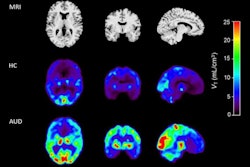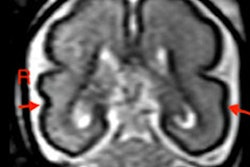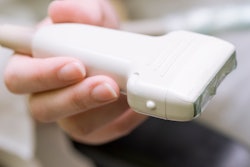Patient communication and education may be key for radiologists in the wake of an advisory from the U.S. Surgeon General, Vivek Murthy, MD, on alcohol-related cancer risk.
Murthy issued an advisory on January 3 recommending an update to the warning label for beverages containing alcohol to include a cancer risk warning.
“Alcohol is a well-established, preventable cause of cancer responsible for about 100,000 cases of cancer and 20,000 cancer deaths annually in the U.S. -- greater than the 13,500 alcohol-associated traffic crash fatalities per year in the U.S. -- yet the majority of Americans are unaware of this risk,” he said in a media statement.
Lung and breast imaging experts weighed in on the warning, which outlined the direct link between alcohol consumption, even with just one or two drinks a day, and increased cancer risk.
“It’s important for patients to recognize that [alcohol] impacts multiple organ systems and not just the liver,” said John Pellerito, MD, vice chair for radiology of Northwell Health in New York. “I also think that physicians should remain vigilant, and ask their patients about their alcohol history.”
Pellerito also serves as a member of the executive committee and chair of the cardiovascular community of practice for the American Institute of Ultrasound in Medicine (AIUM).
John Pellerito, MD
Previous studies conflict regarding how much alcohol people should drink in a safe manner, with some even highlighting potential cardiovascular benefits from small amounts of consumption.
A 2024 report published by the American Association for Cancer Research found that excessive drinking increases the risk for six different types of cancer. These include breast, colorectal, liver, stomach, esophageal, and head and neck cancer. The warning, however, also highlighted that even small amounts of alcohol consumption, one to two drinks a day, add to the risk.
Radiology already has well-defined roles in imaging some of these cancers, specifically breast, liver, and head and neck cancer. But this new public warning could prompt opportunities for patient communication and education around health screening with imaging.
“We have to be open to counseling patients and open to questions,” said Stamatia Destounis, MD, from Elizabeth Wende Breast Care in New York and chair of the American College of Radiology’s (ACR) Breast Imaging Commission. “[The advisory] is a good opportunity for healthcare workers and providers to make meaningful, long-term changes for our patients ... and for all [radiologists] to take this on and counsel patients in any way we can.”
While breast imaging workflows should not be impacted by this warning, Destounis said breast imaging facilities can add relevant information on the risk of alcohol consumption on informational materials such as patient brochures or patient-friendly health websites. Women are already being screened for various risk factors, such as breast density, personal history, personal family history, genetics, and breast symptoms, she added.
“I see no downsides here,” she told AuntMinnie.com. “We’re already screening these patients. It’s just more information for us and for the patients to better take care of them.”
Stamatia Destounis, MD
Liver imaging also isn’t expected to be affected much by the warning, said Victoria Chernyak, MD, from Columbia University in New York and the Radiology-in-Training Editor for Radiology. Current liver imaging guidelines are comprehensive and alcohol is a well-established risk factor for the development of cirrhosis and subsequent hepatocellular carcinoma (HCC).
“We know that alcohol is one of the major causes for advanced liver diseases, including cirrhosis,” she said. “Current guidelines recommend screening patients who have cirrhosis with ultrasound and AFP [alpha fetoprotein] screening every six months and in some instances, alternative imaging modalities such as CT, MRI, and abbreviated MRI.”
While Chernyak said she doesn’t immediately expect imaging protocols to change with this advisory, she added that they eventually could, if more data come out linking alcohol consumption to higher risk of HCC among patients with advanced fibrosis.
Chernyak also said that with the warning in mind, patients should be more honest with their doctors in reporting how much alcohol they consume.
“This is an important risk factor that physicians should be aware of, so hopefully this report will allow them [patients] to be more open and truthful about it,” she said.
Victoria Chernyak, MD
The experts also said that the new advisory could open the door to more multidisciplinary collaboration with physicians outside of radiology. For example, healthcare practitioners could become more knowledgeable about the ACR’s LI-RADS for liver imaging, said Pellerito.
“I do believe that particularly with evaluation of the liver and understanding the role of LI-RADS, ultrasound surveillance can be very helpful in this patient population,” he said. “I’m not sure if physicians are aware of the LI-RADS program that is currently available. When an observation is made on a LI-RADS ultrasound exam, we can refer the patient for additional studies. It allows us to capture cancers at earlier stages and save more lives.”
Pellerito also serves in multiple roles for the American Institute of Ultrasound in Medicine (AIUM), including
The U.S. Department of Health and Human Services (HHS) in a media statement said that along with including cancer risk information on the Surgeon General’s health warning label on alcoholic beverages, guideline limits on alcohol consumption should be reassessed and patients should be advised of the involved cancer risk.
It also called on public health professionals and community groups to highlight alcohol consumption as a leading modifiable cancer risk factor in patient outreach efforts.



















